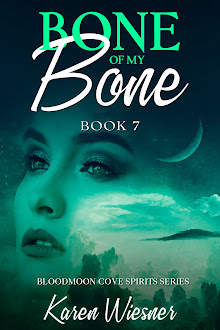Of
Research and Developmental Tool Requirements, Part 2:
Surprise
#3: Developmental Tool Underwhelm
This is the fifth of fifteen posts
dealing with surprising things I learned in the course of writing a science
fiction series.
In
the previous part, I talked
about the overwhelming of amount of advance and
in-the-process-of-outlining-each-book research I needed to do to write my science
fiction series. Here in Part 2, we'll talk about the lack of available developmental
tools I required for my project.
Figuring out how to begin the buildout of my unique galaxy and all
who populated the various settings in Arrow of Time Chronicles was one of the
biggest shocks I got in the process of trying to learn how to write in this
genre. Despite the sheer number of books I bought and websites I scoured in my
desperate search for the promised assistance, finding developmental tools to
prompt areas I needed to focus on expanding were so scarce as to be nearly
nonexistent. I could hardly believe how much trouble I had finding anything I
could use. If you're a writer, you may feel the need to send me links and
suggestions about just this, but I have a strong feeling anything suggested to
me was actually something I located while I was working on my sci-fi series and
none of it provided what I was really needed. I have three ideas about why that
was the case:
1) My series was
simply too complicated that generalized
help was useless or alternately,
the specific help wasn't generalized
enough to be what I needed,
2) the resources
I needed are so well-hidden it's a crime,
or
3) the
development tools I needed simply don't exist!
Frustrated, I turned to videogame and Dungeons & Dragons guides. Of all the materials I bought or
found on the internet, those items had the most helpful development tools. I
took what I needed and could use from all these references, though quite
honestly even those didn't have everything I needed and they simply weren't
specific and/or generalized enough.
Because I had no other choice, I came up with my own worksheets
and tools for my world- and character-building for this series. These
worksheets were a crucial help to me in fleshing out this series, and I feel
they're just specific enough to be generalized (and vice versa). Basically, anyone
could use them and modify them to what they need them for. My upcoming book Writing the Overarching Series (or How I Sent a Clumsy Girl into Outer Space) will
include all of them. I had a binder with profiles for every single culture,
planet, and main character with these worksheets expanded upon for easy
reference. I also found pictures on the internet to help me visualize
everything and thereby allow descriptions to form in the detail needed for
writing the story and individual scenes.
In the back matter of every book in the series, I included
simplified versions of the worksheets I filled out, which I included for all
the cultures. Using that template, I was able to brief provide a snapshot of
each of the alien races for readers who a) needed some refresher from one book
to the next, b) required immediate explanations while reading, and/or 3) were
simply fans of devouring back matter (as I am). We'll talk more about back
matter in an upcoming article.
Next time, we'll talk about deliberately limiting story potential development
in writing science fiction. And, yes, you read that right--deliberately limiting.
Happy writing!
Based
on Writing the Overarching Series (or How I Sent a Clumsy Girl into Outer Space): 3D Fiction Fundamentals Collection by Karen S. Wiesner (release date TBA)
https://karenwiesner.weebly.com/writing-reference-titles.html
http://www.writers-exchange.com/3d-fiction-fundamentals-series/
Karen Wiesner is an award-winning,
multi-genre author of over 140 titles and 16 series, including the romantic science fiction series,
ARROW OF TIME CHRONICLES
https://www.writers-exchange.com/arrow-of-time-chronicles/
https://karenwiesner.weebly.com/arrow-of-time-chronicles.html
http://www.facebook.com/KarenWiesnerAuthor



































